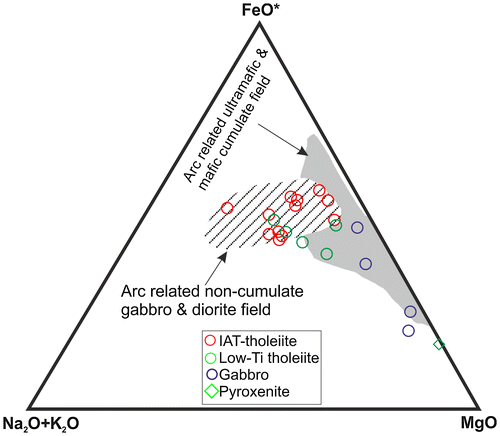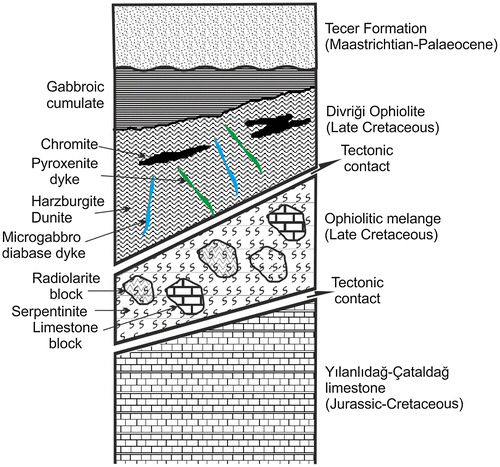Figures & data
Figure 1. U-Pb ages of Tethyan ophiolites in Turkey and surrounding areas. Data are from (1) Dilek and Thy (Citation2006), (2) Dilek, Furnes, and Shallo (Citation2008), (3) Liati, Gebauer, and Fanning (Citation2004), (4) Mukasa and Ludden (Citation1987), (5) Konstantinou, Wirth, and Vervoort (Citation2007), (6) Dilek and Thy (Citation2009), (7) Parlak, Karaoğlan, Rızaoğlu, Klötzli, et al. Citation(2013), (8) Karaoğlan, Parlak, Klötzlı, Thönı, and Koller Citation(2013), (9) Koglin (Citation2008), (10) Koglin, Kostopoulos, and Reischmann (Citation2009), (11) Topuz et al. (Citation2012), (12) Sarıfakıoğlu, Dilek, and Uysal (Citation2012), (13) Karaoğlan, Parlak, Klötzli, Thöni, and Koller (Citation2012), (14) Robertson, Parlak, Ustaömer, et al. Citation(2013), (15) Karaoğlan, Parlak, Klötzli, Koller, and Rızaoğlu Citation(2013).
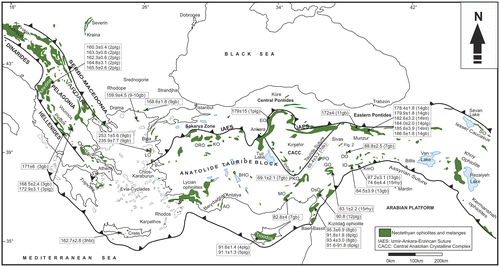
Figure 2. 1/500.000 scale geological map of the Ulaş-Kangal-Divriği (Sivas) regions, showing the distribution of the Tauride platform, ophiolites, granitoids and cover sediments (from MTA, Citation2002).
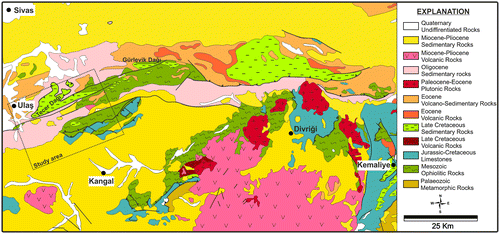
Figure 3. Geological map of the southern margin of the Sivas basin in the Tecer area (Kavak, Citation2010) Source: Kaan Şevki Kavak.
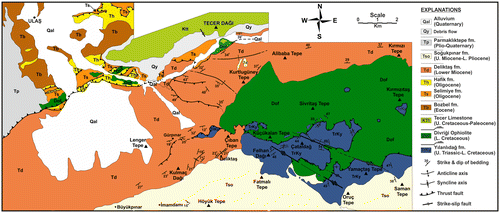
Figure 5. Field views of ophiolitic rocks from the study area. (a) Tectonic contact between the Tauride platform and the ophiolites, (b) radiolites and mafic rocks in the melange, (c) isolated dykes cutting the mantle tectonites, (d) serpentinized mantle harzburgite, (e) cumulate gabbros and (f) the contact between the ophiolite and the Tecer limestone Source: Osman Parlak.
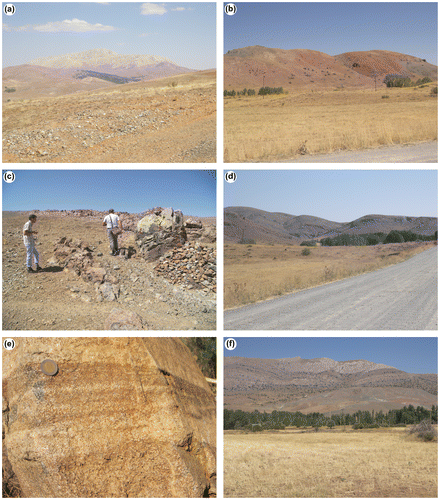
Figure 6. Thin-section views of the ophiolitic rocks in the study area. (a) Serpentinite, (b) harzburgite, (c) pyroxenite dyke, (d) gabbro, (e) olivine gabbro and (f) diabase dyke.
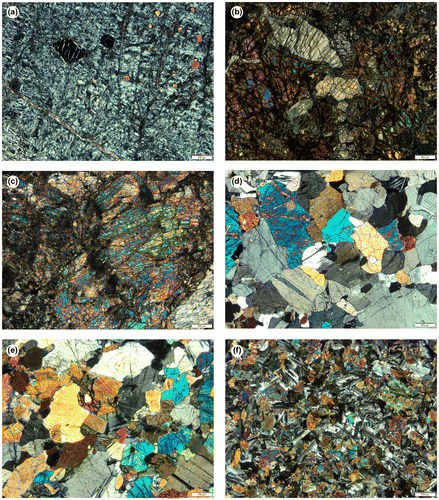
Table 1. Major and trace element contents of the isolated dykes in the study area.
Table 2. REE contents of the isolated dykes in the study area.
Table 3. Major, trace and rare earth element contents of the cumulate gabbros and pyroxenite dyke in the study area.
Figure 7. (a) Ti/Y vs. Nb/Y (after Pearce, Citation1982) and (b) Zr/Ti vs. Nb/Y (after Pearce, Citation1996) diagrams for the isolated dykes from the study area and other Tauride ophiolites (Çelik, Citation2007, 2008; Çelik & Chiaradia, Citation2008; Çelik & Delaloye, Citation2003; Parlak et al., Citation1995, 2006; Parlak & Delaloye, Citation1996; Vergili & Parlak, Citation2005).
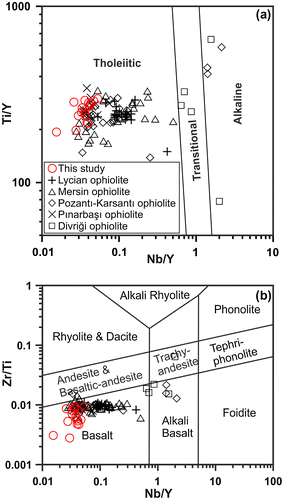
Figure 8. Variation of selected major and trace elements for the isolated dykes in the study area and other Tauride ophiolites. Data for the isolated dykes of the Tauride ophiolites are the same as in Figure .

Figure 9. (a) Degree of partial melting (Ce/Y vs. Zr/Nb) and (b) source characteristics (Ce/Sm vs. Sm/Yb) diagrams for the isolated dykes. Data for the isolated dykes of the Tauride ophiolites are the same as in Figure .
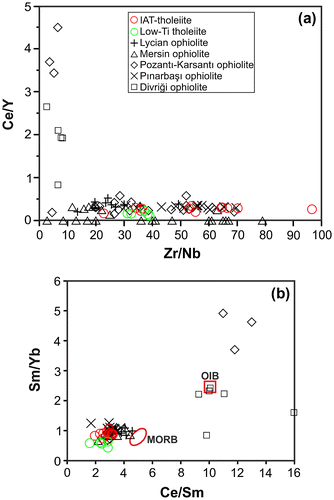
Figure 10. (a) Chondrite normalized REE and N-MORB normalized multi-element diagrams for the isolated diabase dykes, cumulate gabbro and pyroxenite dyke (Normalizing values are from Sun & McDonough, Citation1989). Data for the isolated dykes of the Tauride ophiolites are the same as in Figure .
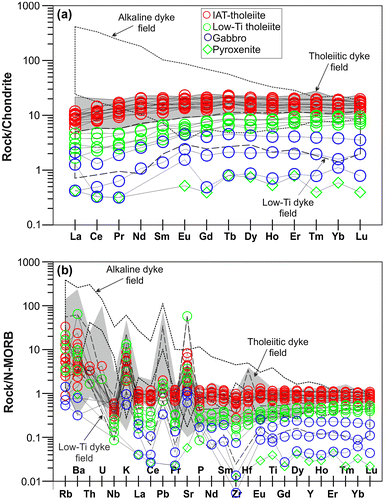
Figure 11. Nb/Th vs. Y diagram (after Jenner et al., Citation1991) for the isolated diabase dykes. Data for the isolated dykes of the Tauride ophiolites are the same as in Figure .
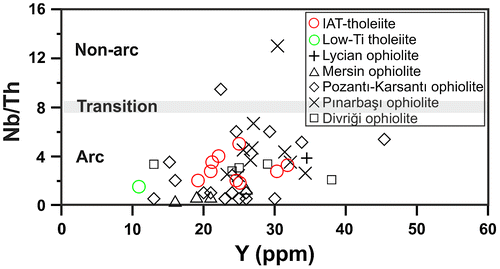
Figure 12. V vs. Ti variations for the isolated dykes from the study area (after Shervais, Citation1982). Data for the isolated dykes of the Tauride ophiolites are the same as in Figure .
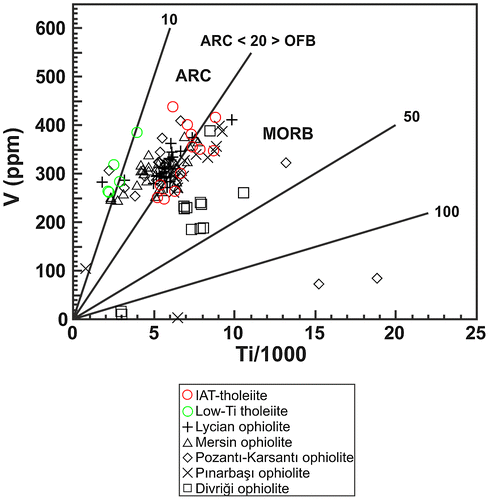
Figure 13. Plot of V vs. Yb for the isolated dykes (after Pearce & Parkinson, Citation1993, QFM = Quartz-Fayalite-Magnetite buffer).
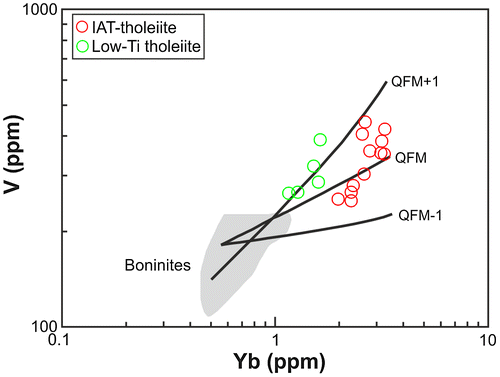
Figure 14. AFM composition of the cumulate and non-cumulate mafic-ultramafic rocks from the study area. Fields of cumulate and non-cumulate rocks are from Beard (Citation1986).
